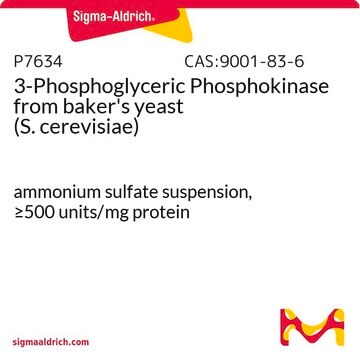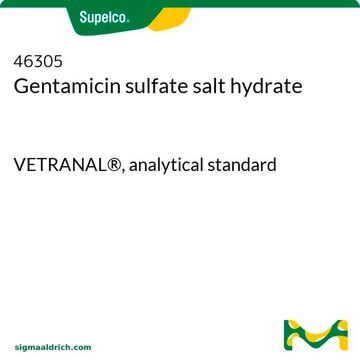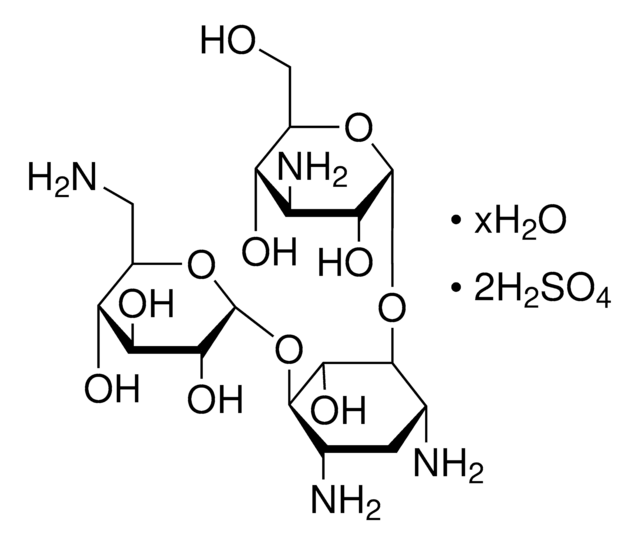A2024
Apramycin sulfate salt
Synonym(s):
Nebramycin II
About This Item
Recommended Products
biological source
Streptomyces tenebrarius
Quality Level
form
powder
color
white to brown
antibiotic activity spectrum
Gram-negative bacteria
Mode of action
protein synthesis | interferes
storage temp.
2-8°C
SMILES string
OS(O)(=O)=O.CN[C@H]1[C@@H](O)[C@H]2O[C@H](O[C@@H]3[C@@H](N)C[C@@H](N)[C@H](O)[C@H]3O)[C@H](N)C[C@@H]2O[C@@H]1O[C@H]4O[C@H](CO)[C@@H](N)[C@H](O)[C@H]4O
InChI
1S/C21H41N5O11.H2O4S/c1-26-11-14(30)18-8(33-20(11)37-21-16(32)13(29)10(25)9(4-27)34-21)3-7(24)19(36-18)35-17-6(23)2-5(22)12(28)15(17)31;1-5(2,3)4/h5-21,26-32H,2-4,22-25H2,1H3;(H2,1,2,3,4)/t5-,6+,7-,8+,9-,10-,11+,12+,13+,14-,15-,16-,17-,18+,19+,20-,21-;/m1./s1
InChI key
WGLYHYWDYPSNPF-RQFIXDHTSA-N
Looking for similar products? Visit Product Comparison Guide
General description
Application
Biochem/physiol Actions
Packaging
Other Notes
Signal Word
Danger
Hazard Statements
Precautionary Statements
Hazard Classifications
Repr. 1B
Storage Class Code
6.1C - Combustible acute toxic Cat.3 / toxic compounds or compounds which causing chronic effects
WGK
WGK 3
Flash Point(F)
Not applicable
Flash Point(C)
Not applicable
Personal Protective Equipment
Choose from one of the most recent versions:
Certificates of Analysis (COA)
Don't see the Right Version?
If you require a particular version, you can look up a specific certificate by the Lot or Batch number.
Already Own This Product?
Find documentation for the products that you have recently purchased in the Document Library.
Customers Also Viewed
Active Filters
Our team of scientists has experience in all areas of research including Life Science, Material Science, Chemical Synthesis, Chromatography, Analytical and many others.
Contact Technical Service













